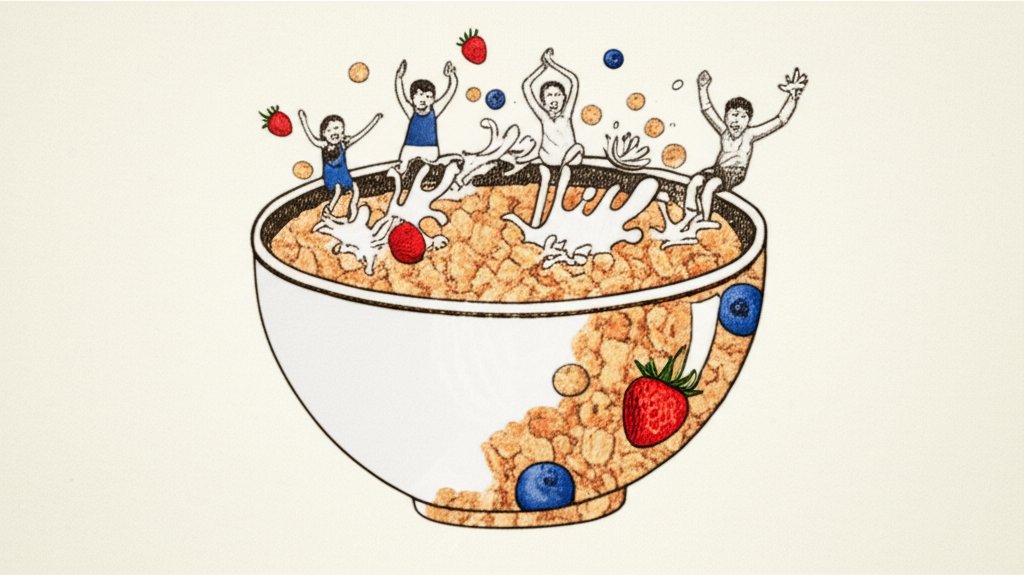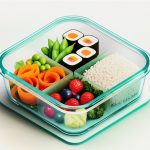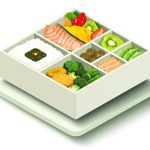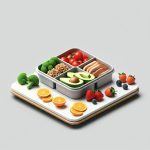Thinking about a quick bowl of Rice Krispies for breakfast? While convenient, it’s important to understand where that fits nutritionally, especially when comparing it to options like quick oats. Many consider quick oats a healthier alternative, but let’s break down why, and whether that perception holds up under closer scrutiny regarding ‘rice crispy cereal nutrition facts’.
At a glance:
- Understand the nutritional differences between Rice Krispies and quick oats.
- Learn how to boost the nutritional value of quick oats.
- Identify potential downsides of quick oats and how to mitigate them.
- Discover how quick oats can fit into a balanced diet for various lifestyles.
Rice Krispies vs. Quick Oats: The Nutritional Showdown
Rice Krispies, a processed cereal, are primarily composed of milled rice, sugar, and malt flavoring. Quick oats, on the other hand, are simply rolled oats that have been pre-cooked and dried for faster preparation. This difference in processing significantly impacts their nutritional profiles.
| Nutrient | Rice Krispies (1 cup) | Quick Oats (1 cup, cooked) |
|---|---|---|
| Calories | ~130 | ~150 |
| Total Fat | ~0.5g | ~3g |
| Saturated Fat | ~0g | ~0.5g |
| Total Carbohydrate | ~27g | ~27g |
| Dietary Fiber | ~0.5g | ~4g |
| Sugars | ~11g | ~0g |
| Protein | ~1g | ~5g |
| As you can see, quick oats offer a substantial advantage in fiber and protein, while containing significantly less sugar than Rice Krispies. This makes quick oats a more satiating and nutritionally dense option. To get the bigger picture, read more about Oats’ nutrition and health benefits. |
The Fiber Factor: Why It Matters
Fiber is a crucial nutrient for digestive health, blood sugar control, and feeling full. Rice Krispies contain very little fiber, leading to a quick spike in blood sugar followed by a crash. Quick oats, with 4 grams of fiber per cup, provide a more sustained energy release and contribute to overall well-being.
- Improved Digestion: Fiber promotes regular bowel movements and prevents constipation.
- Blood Sugar Regulation: Fiber slows down the absorption of sugar into the bloodstream, preventing drastic spikes and crashes.
- Increased Satiety: Fiber helps you feel fuller for longer, which can aid in weight management.
Example: Imagine you have both cereal for breakfast. An hour later, you might find yourself reaching for a snack after Rice Krispies, while quick oats might keep you satisfied until lunchtime.
Boosting Quick Oats: Maximizing Nutritional Value
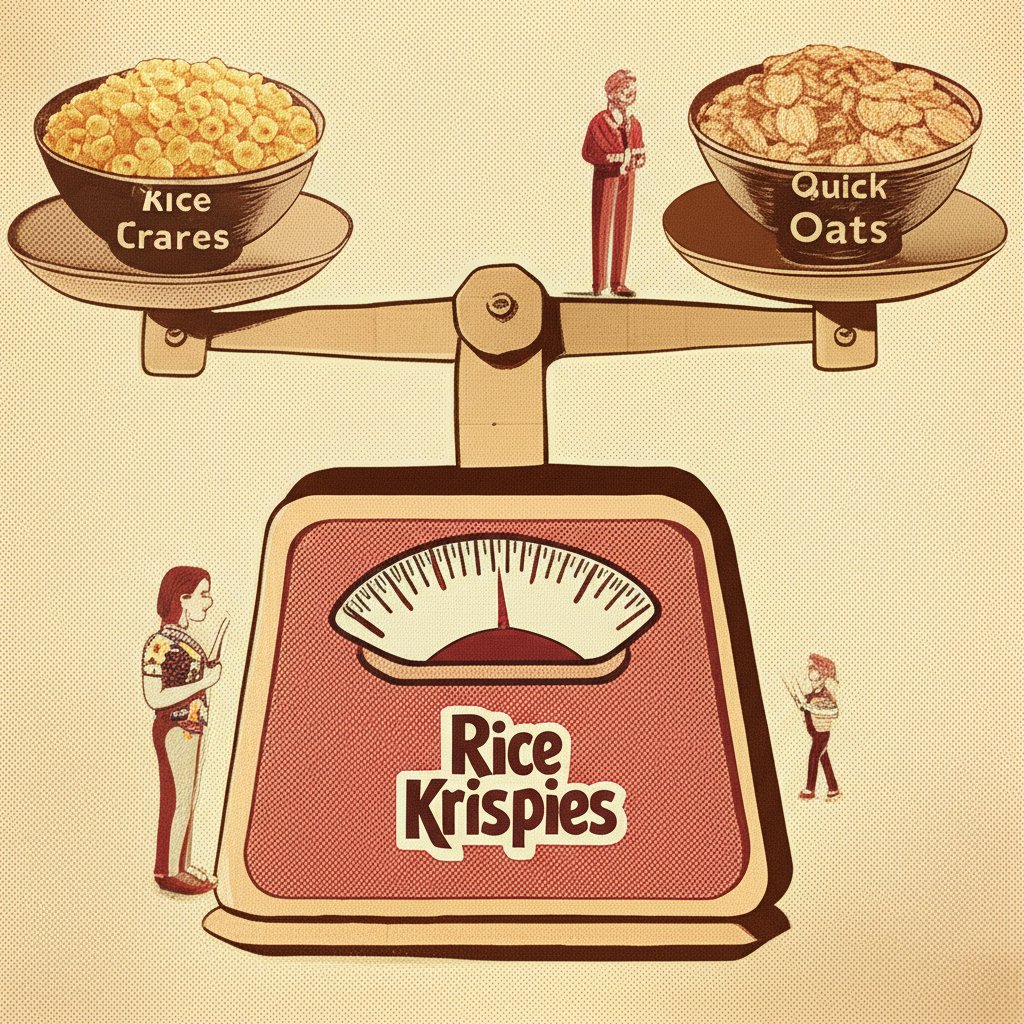
While quick oats are a healthier base than Rice Krispies, you can further enhance their nutritional profile with strategic additions:
- Protein: Incorporate protein powder, nuts, seeds, or Greek yogurt.
- Example: Add a scoop of whey protein or a handful of chopped almonds.
- Healthy Fats: Introduce sources like chia seeds, flaxseeds, or nut butter.
- Example: Stir in a tablespoon of peanut butter or sprinkle chia seeds on top.
- Fruits: Add fresh or frozen berries, bananas, or apples for added vitamins and antioxidants.
- Example: Top with sliced strawberries or blueberries.
- Spices: Enhance flavor without adding sugar by using cinnamon, nutmeg, or vanilla extract.
Case Snippet: Sarah, a busy mom, adds protein powder, berries, and chia seeds to her quick oats every morning. She reports feeling more energized and focused throughout the day compared to when she used to eat sugary cereals.
Glycemic Index: Addressing the Concerns
Quick oats have a higher glycemic index (GI) than steel-cut or rolled oats. This means they can cause a quicker rise in blood sugar levels. However, this effect can be mitigated by pairing them with protein, fiber, and healthy fats.
- High GI: Quick oats are processed, making them easier to digest and causing a faster glucose release.
- Mitigation: Adding protein, fat, and fiber slows down digestion and moderates blood sugar response.
How to Lower the GI of Quick Oats: - Add Protein: Mix in protein powder, Greek yogurt, or cottage cheese.
- Incorporate Fiber: Include fruits, vegetables, or flax seeds.
- Introduce Healthy Fats: Use nuts, seeds, or avocado.
Quick Oats for Different Lifestyles
Quick oats can be a versatile and healthy breakfast option for various lifestyles:
- Athletes: A good source of carbohydrates for energy and workout recovery. Add protein for muscle repair.
- Weight Watchers: High in fiber and protein, helping with satiety and portion control.
- Vegetarians/Vegans: A plant-based source of protein and iron.
- Busy Professionals: Quick to prepare, making it a convenient and nutritious breakfast option.
Potential Downsides and How to Avoid Them
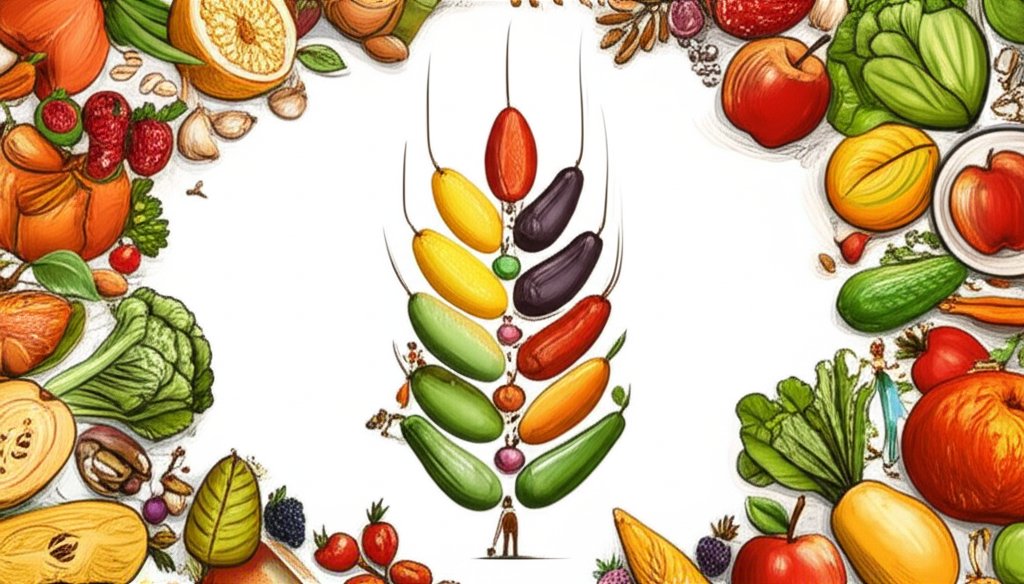
While quick oats offer several benefits, there are a few potential drawbacks:
- Lower Fiber Content Than Other Oats: Steel-cut and rolled oats have more fiber. Solution: add extra fiber-rich ingredients.
- Added Sugar in Flavored Varieties: Many flavored quick oats contain added sugar. Solution: choose plain oats and add your own flavorings.
- Potential for Cross-Contamination with Gluten: If you have celiac disease or gluten intolerance, ensure the oats are certified gluten-free. Solution: look for certified gluten-free labels.
Quick Answers: Common Questions About Quick Oats
Q: Are quick oats as nutritious as steel-cut oats?
A: While steel-cut oats are slightly more nutritious due to their higher fiber content, quick oats are still a healthy option, especially when fortified with protein, fats, and additional fiber.
Q: Can quick oats help with weight loss?
A: Yes! Their high fiber content promotes satiety, helping you eat less throughout the day.
Q: Are quick oats suitable for people with diabetes?
A: Yes, but portion control and adding protein, fats, and fiber are crucial to manage blood sugar levels effectively.
Q: Are all quick oats gluten-free?
A: Not necessarily. Look for products that are certified gluten-free to avoid cross-contamination.
Q: Can I use quick oats in recipes other than oatmeal?
A: Absolutely! Quick oats can be used in muffins, cookies, granola bars, and even as a binder in meatloaf or veggie burgers.
Practical Playbook: Getting Started with Quick Oats
Here’s a quick-start guide to incorporating quick oats into your diet:
- Choose Plain Oats: Avoid flavored varieties with added sugars.
- Add Protein: Mix in protein powder, Greek yogurt, or nuts.
- Incorporate Healthy Fats: Use chia seeds, flax seeds, or nut butter.
- Include Fruits: Top with berries, bananas, or apples.
- Experiment with Flavors: Use cinnamon, nutmeg, or vanilla extract.
Example Recipes:
- Berry Protein Oats: Quick oats, protein powder, mixed berries, chia seeds, almond milk.
- Peanut Butter Banana Oats: Quick oats, peanut butter, sliced banana, flax seeds, cinnamon.
- Savory Oats: Quick oats, vegetable broth, sautéed vegetables, tofu or tempeh.
A Balanced Choice
While both Rice Krispies and quick oats offer convenience, quick oats provide significantly more nutritional value. By understanding the nutritional differences and how to maximize the benefits of quick oats, you can make an informed choice and incorporate this versatile grain into a healthy and balanced diet.
- Why Glass Boxes for Lunch Are Trending for Meal Prep - December 17, 2025
- Bento Box Glass Offers Practical, Eco-Friendly Meal Storage - December 16, 2025
- The Best Bento Box Price For Your Perfect Packed Lunch - December 15, 2025
